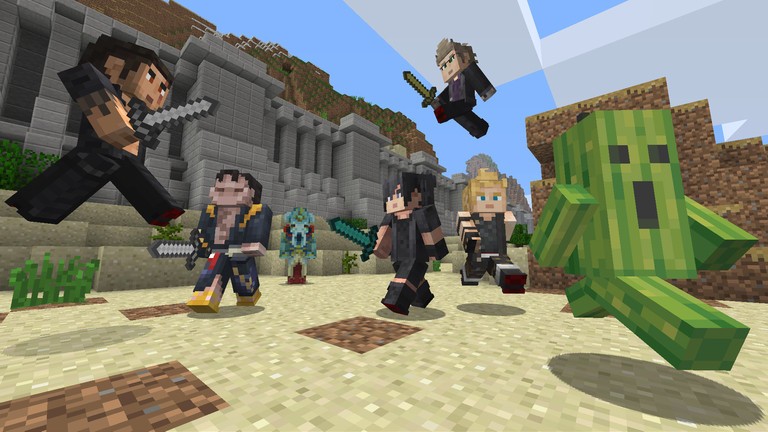
by Stone Marshall | Aug 17, 2018 | Awesome Book News, Free, Intro, Minecraft News, Minecraft questions, news, parent-news, State of Stone, Stone Marshall Book News, Stone Marshall Books, Stone Marshall Club, Stone Marshall Minecraft Adventures, Uncategorized |
Ever wanted to explore Treasure Island or pretend to be Robinson Crusoe? Minecraft is now being used to create an ‘immersive experience’ to engage reluctant readers – we see how it plays out
Robert Louis Stevenson’s 1881 classic Treasure Island tells of Jim Hawkins’s adventures on board the Hispaniola, as he and his crew – along with double-crossing pirate Long John Silver – set out to find Captain Flint’s missing treasure on Skeleton Island. Now, more than a century later, children can try and find it themselves, with the bays and mountains of Stevenson’s fictional island given a blocky remodelling in Minecraft, as part of a new project aimed at bringing reluctant readers to literary classics.
Sign up for Bookmarks: discover new books our weekly email
Read more
From Spyglass Hill to Ben Gunn’s cave, children can explore every nook and cranny of Skeleton Island as part of Litcraft, a new partnership between Lancaster University and Microsoft, which bought the game for $2.5bn (£1.9bn) in 2015 and which is now played by 74 million people each month. The Litcraft platform uses Minecraft to create accurate scale models of fictional islands: Treasure Island is the first, with Michael Morpurgo’s Kensuke’s Kingdom just completed and many others planned.
While regular Minecraft is rife with literary creations – the whole of George RR Martin’s sprawling setting for Game of Thrones, Westeros, has been created in its entirety, as have several different Hogwarts – Litcraft is not all fun and games, being peppered with educational tasks that aim to re-engage reluctant readers with the book it is based on. Lead researcher and head of Lancaster University’s English and creative writing department, Professor Sally Bushell, calls it “an educational model that connects the imaginative spatial experience of reading the text to an immersive experience in the game world”.
She says, of the Litcraft Treasure Island: “We hope it will motivate reluctant readers – we can say, ‘We’re going to read the book and then at one point, we’ll go play on the ship.’ I would have loved it as a kid. It is an empathetic task – you do what the characters did yourself, so you understand why they act they way they did in the book.”
The Treasure Island “level” has been extensively road-tested by children such as Dylan, whose school is set to adopt Litcraft in 2019. “It’s really fun,” he says. “I enjoyed it because I’ve read the book, but you have to follow rules in that. In games, you can explore. Now I know exactly what the book looked like.”
What did he like most? “I like that you get to see the pictures. You don’t have to make them in your head. And I liked the ship, Ben Gunn’s cave and the parrots. And there was that weird pig that kept jumping off that cliff. That wasn’t in the book!” (“That was a game glitch,” says Bushell).
The kids know how to use Minecraft more than the teachers do. It inverts the relationship
Sally Bushell, Lancaster University
The project, which is featured on Microsoft’s Minecraft.edu website, is currently being presented to school teachers and librarians across the UK. There has been “an enthusiastic response” to the trials under way in local schools, with plans to roll Litcraft out to libraries in Lancashire and Leeds from October 2018.
Dylan, like many nine-year-olds, enjoys books but is more enthusiastic when talking about Minecraft, which he does with the casual expertise that many children have with their favourite games. He’s already made his own Hunger Games world in Minecraft at home, but couldn’t get some of his traps to work.
This know-how seems to both frighten and impress less tech-savvy adults – which Bushell hopes will not deter schools from adopting it. “The kids know how to do it more than the teachers do,” she says. “It inverts the relationship: you’ve got kids who know more than the adults. You need quite confident teachers. They’re more worried about it. I want to say, ‘Don’t be worried, because all your eight-year-olds will know how to do this.’”
Libraries are particularly interested in the possibilities of multiplayer, Bushell says, adding that one of the future projects will be Lord of the Flies: “In that case, you want all the kids in there playing out a scenario and asking philosophical questions. We hope they do some reading, then play the game, then do some empathetic writing based on what they did in there.”
The Kensuke’s Kingdom map, based on Morpurgo’s story of a boy washed up alone, is particularly aimed at engaging reluctant readers and has just been completed. “The library resources we are putting together include audio and in-game reading and writing as well as graphic novels as a step to the full text,” said Bushell. “The resources are designed to encourage them to either return to or connect with the book through the immersive experience.”
Bushell said more literary Minecraft islands will follow. “Treasure Island is the first world for Minecraft.edu but they anticipate a series – most likely, the next will be The Swiss Family Robinson, The Tempest and Robinson Crusoe,” Bushell says. A recreation of Dante’s Inferno, with a map for each level of hell, is also in development.
But what book does Dylan hope to see next? “The Hunger Games,” he says with no hesitation. “A proper one.”

by Stone Marshall | Aug 17, 2018 | Awesome Book News, Free, Intro, Minecraft News, Minecraft questions, news, parent-news, State of Stone, Stone Marshall Book News, Stone Marshall Books, Stone Marshall Club, Stone Marshall Minecraft Adventures, Uncategorized |
Minecraft remains an incredibly popular game even to this day, but there are some issues which need to be addressed. For example, the user interface (UI) could be much better and more streamlined. Luckily, Microsoft is aware of these problems and plans on updating the menus in the near future.
Today, a post on Minecraft’s website detailed some of the changes coming to the game. The team wants players to contribute their menu designs by downloading templates and sharing them online.
Menus! They’re essential for helping you navigate Minecraft and get to what you want with ease. That’s why we’ve started working on a major redesign of the Minecraft menu… for all Bedrock Engine-based platforms (so that’s Minecraft on Xbox One, Windows 10, virtual reality, mobile devices, and Nintendo Switch). What would you like to see from an updated Minecraft menu? Whatever your ideas are, we’d love to see them… share your designs with us… you can do that on our our Minecraft Discord channel.
It’ll be interesting to see what fans come up with. Hopefully the developer will incorporate a lot of feedback to make navigating the UI even better. We’ll keep you posted as soon as the team finalizes its plans and shares the new look. Until then, be sure to contribute your ideas. Please keep in mind that the ‘Bedrock’ version isn’t available on PlayStation because Sony blocks cross-play.
Keep an eye on WindowsCentral.com/Gaming for all the latest in Xbox and Windows 10 gaming, accessories, news, and reviews!

by Stone Marshall | Aug 16, 2018 | Awesome Book News, Free, Intro, Minecraft News, Minecraft questions, news, parent-news, State of Stone, Stone Marshall Book News, Stone Marshall Books, Stone Marshall Club, Stone Marshall Minecraft Adventures, Uncategorized |
Blizzard Entertainment is teaming up with the toy experts at Nerf to fulfill our dreams of being an Overwatch-style gunslinger.
Blizzard first announced the collaboration at last month’s San Diego Comic-Con, saying that Nerf would be launching a sleek and chrome-covered blaster gun modeled after the Hellfire Shotgun that Reaper, one playable character, uses in-game. Now, Blizzard has announced a second plastic blaster modeled after a weapon in Overwatch’s lore: the bubblegum-colored Light Gun used by fan favorite character D.Va.
According to Blizzard, the replica fires at speeds reaching 80 feet per second, and features a “recoil action” feature.
Both plastic blaster guns are made for Nerf’s “Rival” line, which are high performance guns targeted toward an older audience. Rather than featuring Nerf’s traditional foam bullets, these blasters will fire off soft, squishy projectiles, acting a bit like a less aggressive paintball gun.
Both Overwatch replicas are hitting store shelves in 2019, though their exact launch date is still a mystery. The price is also TBD — but if the other guns in the Rival arsenal are any clue, the final price could range anywhere from $29.99 up to $99.99.

by Stone Marshall | Aug 16, 2018 | Awesome Book News, Free, Intro, Minecraft News, Minecraft questions, news, parent-news, State of Stone, Stone Marshall Book News, Stone Marshall Books, Stone Marshall Club, Stone Marshall Minecraft Adventures, Uncategorized |
HyperX makes some of the best gaming headsets around, and now, the accessory maker has an officially licensed Sony headset for PlayStation 4 users under its Cloud brand. The HyperX Cloud is the company’s standard headset. It costs $80 for the most recent version, and the licensed PS4 version will maintain that price. For people who play way too much Fortnite, like yours truly, owning a headset like this is pivotal for hearing footsteps and pinpointing an opponent’s location.
HyperX also makes a budget headset called the Cloud Stinger for $50, more premium PC-focused models like the Cloud Alpha and Cloud Revolver costing $100 and $120, and an all-purpose wireless version for $160 called the Cloud Flight. But nearly all of its headsets are surprisingly comfortable — I own the Cloud and Cloud Flight and have tried the Cloud Alpha and Revolver — and mostly involve compromising on sound quality or shelling out extra for more robust microphone and audio controls.
The PS4 licensed model will get you a special blue color scheme, as well as the PlayStation logo emblazoned on the side. You also get a volume control module. The headset will be available on August 13th from both Best Buy and Amazon.

by Stone Marshall | Aug 15, 2018 | Awesome Book News, Free, Intro, Minecraft News, Minecraft questions, news, parent-news, State of Stone, Stone Marshall Book News, Stone Marshall Books, Stone Marshall Club, Stone Marshall Minecraft Adventures, Uncategorized |
Fortnite for Android is coming soon, and rumors have suggested it will be a 30-day exclusive to Samsung’s Galaxy Note 9. A newly leaked version of the game appears to confirm that Fortnite for Android will be limited in some way to Samsung’s latest devices. XDA-Developers has obtained a leaked APK of Fortnite for Android, and has discovered it’s restricted to both the Samsung Galaxy Note 9 and Galaxy Tab S4.
XDA-Developers reports that the game has a variety of checks for Samsung’s new devices, and it even looks for the existence of Samsung’s S-Pen. Epic Games is planning to launch Fortnite for Android soon, but the company has not yet revealed exactly when it will be available. This leaked copy does make it clear there’s some type of exclusivity for Samsung’s latest devices, but there are no hints on how long it will last. We’ll likely find out when Samsung launches its Galaxy Note 9 later this week.
Fortnite for Android won’t be available on the Google Play Store once it’s released, though. Epic Games will launch the game through the company’s website, and Android users will need to sideload it to install it. That’s raised some understandable concerns around security and fake APKs of Fortnite for Android. We’ve started to see a number of fake APKs circulating already, and as official copies are making their way outside of Epic Games and Samsung, the risk of downloading a fake copy full of malware increases.

by Stone Marshall | Aug 15, 2018 | Awesome Book News, Free, Intro, Minecraft News, Minecraft questions, news, parent-news, State of Stone, Stone Marshall Book News, Stone Marshall Books, Stone Marshall Club, Stone Marshall Minecraft Adventures, Uncategorized |
It’s a weird time to be a Castlevania fan. While Netflix has reinvigorated interest in the series with a gloriously violent animated show, the games themselves have dried up since the departure of long-time director Koji Igarashi. The most recent official Castlevania title was a pachinko game released in Japan last year. But, as is so often the case, indie developers have stepped up to fill in the gaps. There’s an entire subgenre of 2D action games dubbed “Metroidvanias” that pull from the open-ended structure pioneered by Metroid and later expanded by Igarashi’s Castlevania. It’s not hard to find a game inspired by Castlevania, but it is hard to find one that evokes the same tone and feel. That’s what makes Dead Cells so interesting.
Dead Cells isn’t exactly a new game; it’s been available on PC as an “early access” title since last May, but tomorrow will be the release of the full version of the game on PS4, Xbox One, PC, and the Nintendo Switch. You play as an unnamed warrior who awakens in some kind of dingy dungeon, and, with little explanation, you’re forced to fight your way out. As you progress, you’ll come upon new locations — toxic sewers, sunlit castle rooftops, unsettling graveyards — and find new horrors to fight. Along the way, you’ll gain new abilities and weapons that make you stronger and let you venture to previously inaccessible locales.
Dead Cells
This is all par for the course for a Metroidvania. What makes Dead Cells feel particularly Castlevania-like, though, is its style. The side-scrolling, pixel art world feels like it could be another elaborate Dracula castle. There are all kinds of weird, gothic creatures crawling about, from giant, exploding slugs and undead knights to more exotic fare like massive alien eyeballs chained to the wall. Even the people there to help you are creepy; the hooded shopkeeper has a huge glass canister chained to its back. Exploring Dead Cells’ haunting crypts reminded me a lot of playing Castlevania III as a kid. You can even wield an electric whip and eat turkey legs to regain health.
But as much as Dead Cells can feel like a long-lost Castlevania, it’s also a very different game in many ways. For one thing, there’s the structure built around permadeath, a subgenre known as a “roguelike.” Whenever you die in the game, you’re forced to start over from the beginning. Every time you start up again, your oozing green head crawls into a new body, and the crypts around you change slightly. Each playthrough teaches you new skills, and you’re also able to unlock new abilities, some of which carry over to future lifetimes. It’s an intriguing mixture. Typically, Metroidvania games are defined by a place, a location that you slowly learn about by uncovering all of its secrets. There’s some of that in Dead Cells, but because the world is constantly changing, you’re never quite sure what to expect.
It’s also much faster paced than most of its contemporaries. Combat requires you to be constantly alert and quickly dodge and defend against surprisingly clever enemies. Dead Cells is a game that forces you to experiment. You can’t just find a weapon you like and stick with it; once you die, that weapon will be gone, and you never know what items you’ll pick up on the next playthrough. At one point, I found a lot of success combining a powerful broadsword with a freezing attack, but I had to completely switch up my strategy the next time I made my way through the castle. Each weapon has its own distinct feel, as if the tiny pixelated swords and hammers each had a real weight to them, and it requires practice to get the most out of them.
Dead Cells manages to evoke the same feelings I used to get when I played Dracula’s Cure and Symphony of the Night, but it still offers its own distinct and engrossing take on the genre. I’ve been struggling through the crypts for a week now, and I don’t see myself stopping anytime soon. Tomorrow’s release of Dead Cells will soon be joined by the second season of the Netflix anime, which is due in November, while Igarashi’s own promising Bloodstained: Ritual of the Night is also on the way. As it turns out, it’s actually a great time to be a Castlevania fan.





